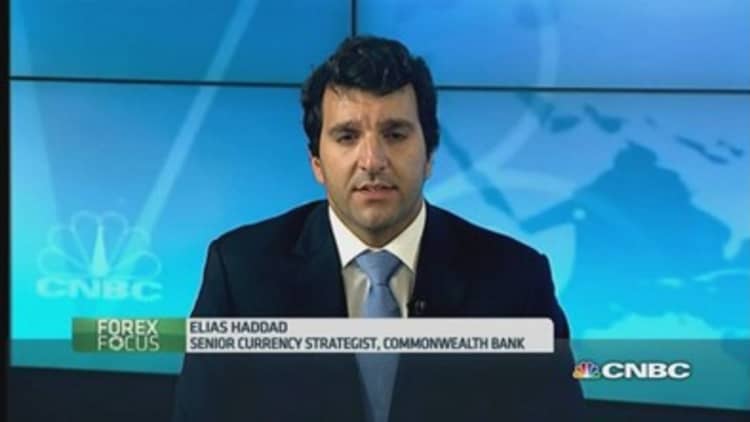With the Reserve Bank of Australia (RBA) leaving the door open to further rate cuts, the only way forward for the Australian dollar is down, say strategists.
The Aussie plunged 1.9 percent against the U.S. dollar to $0.7655 on Tuesday after the central bank cut its benchmark cash rate by 25 basis points to a fresh record low of 2.25 percent. It was the currency's biggest once-day loss since mid-2013, according to Reuters.
"75 cents seems the natural progression point from here – I would expect that over the next two weeks if not sooner," Jonathan Cavenagh, a currency strategist at Westpac told CNBC.
"Beyond that, we'll see how things unfold. If we see another rate cut, the Aussie could definitely be trading in the low-70 cent range," he said.
Jawboning
The central bank struck a dovish tone in its policy statement highlighting below-trend growth and weak domestic demand in the economy, giving rise to expectations of additional easing. It also said the Aussie remained above fundamental value and that a lower exchange rate is needed to achieve balanced growth.
In December, RBA Governor Glenn Stevens told local media that he would prefer to see the currency at $0.75 – levels not seen since early 2009.

The Austrian dollar has already suffered a 26 percent decline against the U.S. dollar over the past two years, weighed by weak commodity prices and a stronger greenback.
Paul Bloxham, chief economist for Australia and New Zealand at HSBC also expects the currency to come under further selling pressure. He forecasts the currency will head towards $0.70 going into 2016.
Read MoreCharts: Australian dollar faces test of key support
"Most clearly – the one thing [the RBA] really want to do is force the Aussie dollar to go further down," he said.
More rate cuts?
Market watchers are keeping a keen eye on the RBA's quarterly statement on monetary policy due out on February 6 for more clues on whether it will pull the trigger again on rates.
Falling interest rates are negative for the Australian dollar because they erode the rate differential that supports demand for the currency.
Ray Attrill, global co-head of foreign exchange strategy at National Australia Bank, meanwhile, is recalibrating his outlook for the currency.
"As things stand, the rate cut reasserts downward pressure on the currency – but we want to see the dust settle on the RBA move before revising our forecasts," he said. At the end of last year, the bank had originally expected the Aussie to end 2015 at $0.78.


